November 19, 2017, was the forty-sixth anniversary of the repose of Nun Olga (Kachanovskaya; +1971), who performed the podvig [ascetic labor] of “foolishness for Christ’s sake” at the ancient Florovsky Convent of the Ascension in the Podil neighborhood of Kiev for over sixty years. Her name is included in the convent’s list of names of reposed persons to pray for; the clergy daily pray for her in the altar, and the convent’s nuns remember her as they take turns reading the Psalter around the clock.
Every year on this day many people gather near her grave at the ancient Zverinets cemetery-necropolis in Kiev where numerous Florovsky Convent’s nuns and representatives of Kiev clergy rest. There are several elderly nuns at the Florovsky Convent who remember Blessed Olga, a “Fool-for-Christ” and a clairvoyant holy woman. Many believers not only in Kiev but also far beyond still remember her: Blessed Olga helped and prayed for a large number of pilgrims who came to her from different cities and towns of Ukraine and Russia in the difficult post-war period and during the Khrushchev persecutions. She guided them on the path of salvation and healed the terminally ill.
It should be noted that in the period of anti-Church persecutions various kinds of “blessed wanderers”, or “fools for Christ’s sake” appeared in almost every city and town of the USSR. In Ukrainian they were called “mad servants of God”. Under the mask of madness they exposed the godless, atheist regime. At present, materials for the canonization of Blessed Nun Alypia (Avdeeva; +1988) of Kiev are being collected. In the 1970s her hermitage stood beside the ruins of the Goloseevo Monastery of the Protection of the Mother of God and now her relics rest at this restored monastery. Mother Alypia became famous for her numerous miracles. It is unknown whether these two eldresses were in contact with each other; it seems that they did know one another and, obviously, before her repose in 1971, Mother Olga “passed on the baton” to Mother Alypia who became a renowned eldress and interceded for the entire world.
It is known for certain that the brethren of the Kiev Caves Lavra, which was closed in 1961, sought spiritual advice of both these women-ascetics. Thus, Monk Rufus (Rezvykh; +2009), who served time in labor camps for his faith under Khrushchev for five years, used to tell about the two eldresses’ prophecies: they predicted that first he would be imprisoned, then wouldn’t have a roof over his head for a long time and would finally get a flat. The prediction proved correct: after prison he for eighteen years took shelter in a tiny room attached to a public toilet next to the Lavra, and before its restoration, as a war veteran—a fighter pilot—he at last was given a small apartment in Obolon. Archpriest Methodius Finkevich of blessed memory (+2015), rector of the Ascension Church in Kiev’s Demeevka district who died as a monk at the Pochaev Lavra on the feast of the Pochaev icon of the Mother of God, told me that he personally knew both holy women and after their repose he prayed to them, seeking their intercessions in difficult life situations.
According to the archpriest, Mother Olga attracted many, but few understood her language, which often seemed to have lack of logic: the hidden meaning of her words and actions was revealed with time, not immediately. For example, during the early sixties’ Cold War, when the USA stationed nuclear weapons in Turkey and the Soviet Union in response placed ballistic missiles in Cuba, there was a real threat of a nuclear war. The Cuban Missile Crisis was overcome by the diplomatic negotiations between the USA and the USSR; the meeting between Nikita Khrushchev and John F. Kennedy drew a line beneath a global threat. At that time Western media illustrated this event in the form of a political picture—the leaders of the two world’s superpowers (the USA and the USSR) blow out big candles (symbolizing ballistic missiles) on a round cake (symbolizing our Earth). This illustration with attending comments was reprinted by the Soviet press as well. In those days Mother Olga brought huge candles to the church that were smoking. When asked why she did it, the ascetic answered: “We need to burn the big ones, and we will blow them out with a cake.”
“Once Mother Olga exposed me as an eater of ‘roosters’,” Fr. Methodius recalled. “At that time I was a novice at the Lavra and did not eat meat. And after the monastery’s closure I lived in a flat, and when I once fell ill, the doctor advised me to eat chicken broth. So the landlady would cook me broth from young roosters. At our following meeting Olga said to me: ‘Methodius, you don’t eat meat, do you?’ ‘No, mother, I don’t.’ ‘Well, you abstain from meat with the exception of young roosters,’ she answered with a smile. And she added: ‘Yes, do it now. We ought to obey the doctors.’”
During the Khrushchev anti-religious persecutions, when monasteries and churches were closed down in great numbers, the Florovsky Convent of Ascension was under threat as well. The police inspected the living quarters and tried to drive the nuns away from the convent, saying: “The convent is to be closed soon. Push off!” The night before, Blessed Olga was running along the corridors and knocking at the doors of all sisters with the words: “Let me in! Let me in! I have nowhere to stay for the night!”
The aged sisters who currently live at the convent remember her wearing “royal garments”—this is how Blessed Olga herself called her padded jacked, skirt, old headscarf and a pair of rubber galoshes, which she wore for many years. Ninety-three-year-old Schema-Nun Epistemia, who does not receive guests, has told us through Nun Theoktista (Zeldis) that many years ago, when she arrived to the convent, Blessed Olga came up to her and predicted all her future obediences, saying: “You will live a long life and will live in seclusion as a schema-nun.” And that prophecy was fulfilled.
Three years before her demise Mother Olga predicted that she would die in the late autumn, “and Abbess Animanisa will follow after me soon, and we will lie close to each other.” And indeed the abbess passed away three days after Blessed Olga and was buried twenty meters [c. 65.6 feet] from her at the Zverinets Cemetery. “I will not leave you—come to my grave,” she said to her spiritual children. Above the gravestone, under a cross, you can see the blessed woman’s full-length portrait, installed at the request of her spiritual children, which depicts her in her “royal garments”: in a quilted jacket, an old headscarf and galoshes… Thus Mother Olga walks in poverty, humiliation and “foolishness” to the Heavenly Kingdom.
The aged nuns also remember the stories of their predecessors, who lived before the Revolution and told them about the arrival of Blessed Olga to the convent.
In 1905, a landowner of the Chernigov province Ivan Kachanovsky brought his eighteen-year-old daughter Olga to the Florovsky Convent. She was “of striking beauty and had an air of majesty”, wore a luxurious dress, a hat with a veil and expensive shoes. Incidentally, the Florovsky Convent never was, and still is not, coenobitic; instead, it is a kind of “idiorhythmic” convent, and women from wealthy families could buy cells there.
It should be stressed that in the past centuries the community included nuns who came from famous noble families of Russia: Schema-Nun Nectaria (secular name: Natalia Borisovna Dolgorukova; the daughter of Field Marshal Boris Petrovich Sheremetev who was a friend of Emperor Peter I); Abbess Parthenia (secular name: Apolinaria Alexandrovna Adabash, who hailed from a noble Moldavian family).
It was at the Florovsky Convent that the Venerable Elena of Kiev (secular name: Ekaterina Alekseevna Bekhteeva) reposed in the Lord in the first half of the nineteenth century (canonized in 2009). She was born to a wealthy family in the city of Zadonsk in 1756. The Holy Hierarch Tikhon of Zadonsk and Voronezh (1724- 1783; feast: August 13/26) was the Bekhteev family’s friend, and it was due to his influence that young Ekaterina decided to take up monasticism. The holy bishop bequeathed his coffin to the saintly woman. It was at the Florovsky Convent that St. Alexandra (secular name: Agafya Semyonovna Melgunova; +1789, feast: June 13/26), the foundress of the Diveyevo Convent, received the monastic tonsure. According to tradition, young Prokhor Moshnin—the future Venerable Seraphim of Sarov—visited the Florovsky Convent before his tonsure.
The future “Fool-for-Christ”, Olga Kachanovskaya, graduated from St. Petersburg classical gymnasium with high distinctions. After that, according to tradition, the Mother of God appeared to her during a night prayer and blessed her for the podvig of “foolishness for Christ’s sake”. Her father, concerned over the radical changes in his daughter’s way of life, who had been especially devout earlier and now prayed throughout the nights and “uttered strange things at the table”, first took Olga to doctors and then, at the advice of the Glinsk Hermitage Monastery’s elders (Ivan Kachanovsky’s estate was located not far from the monastery), brought her to the Florovsky Convent in Kiev.
In her first twenty years at the Florovsky Convent Olga endured many sorrows, was often disparaged and jeered at. In order to protect her from derision and humiliation, Olga’s father built her a cell on the hill beside the convent and next to the convent’s graveyard. Blessed Olga would spend nights in prayer amid the graves, and during the day she would carry out her obediences at the convent. After the Great Patriotic War [the Russian name for the Second World War] and in the last decades of her life, Olga was the object of general respect and veneration; although the tricks, “insane” speech and actions of the “fool-for-Christ” shocked and frightened many.
Novice N., the author of the newly-published book, A Cry for Spiritual Life, has kindly provided some reminiscences of those who witnessed Blessed Olga’s miracles for the preparation of this article.
***
According to the senior nuns of the Florovsky Convent, Blessed Olga was “attractive, tall, and slender”. Before the devastating fire on Kiselevka Hill where the church and cells were located, she would lie down on the floor at bedtime with the words: “Oh, it’s so hot here! It’s so hot here!” Soon after the fire on Kiselevka the authorities destroyed both the cells and the church.
***
Once Blessed Olga settled down on the abbess’ chair in the convent’s refectory, took a piece of “salo” [cured pork fat: a traditional food in Slavic countries, usually consisting of slabs of salt fatback or pork bellies, often with garlic or seasonings] out of her pocket and started devouring it. The sisters immediately ran up to her: “Mother, mother, what are you doing?” “Don’t interfere! I am stocking up on vitamins!” she replied, thus denouncing some nuns for secret eating—they justified breaking the fast by vitamin deficiency after the war.
***
One Jew lived in Borichev Tok Street at the bottom of a hill close to the convent. He took shelter in a tiny flat of a semi-basement with street-facing windows.
In the summer heat, the windows were often half open, so all passers-by could see that a frail, paralyzed old man dwelled inside.
One day Blessed Olga was going by. She stopped, picked up a stone and threw it at the window. The broken glass tinkled. Olga cried: “Stop lying down! Get up and go praise God!” Then lo and behold, the poor man who had been lying in bed for fifteen years miraculously rose, walked round the room a little and soon showed up at the church, asked to join the Orthodox Church and was baptized.
***
A local parishioner from the Vishnyovoye village near Kiev Valentina K. related:
“Every morning at four o’clock Blessed Olga and Mother Maria made for Saint Volodimir Hill to pray. They had a long way to go. My aunt, who would always go to work from Podil to Pechersk by the earliest tram, many times saw the two women-ascetics waddling downhill, wrapped in headscarves.
One day my aunt witnessed the following occurrence. Nun Olga pounced on one of the sisters near the convent’s spring close to the Ascension Church. Olga knocked her down and started ‘jumping’ and making dancing movements on her. Frightened, the cell-attendant Maria seized the blessed woman’s hands: ‘What are you doing? What are you doing? Stop it! You will mutilate her!’ Olga finally quieted down and retired very cheerfully. On the following day my aunt met the ‘offended’ nun and asked her with sympathy: ‘Oh, you poor thing! Olga beat you so badly yesterday!’ But the nun responded: ‘My arm was paralyzed for two years, but now I can move it—I have been healed!’”
***
Once Nun Olga fell in her cell and broke her leg. The sisters immediately called in an ambulance. But the eldress answered: “Let them who have called in the ambulance receive the treatment. As for me, I will suffer for my sins and the sins of the whole world.” Thus the blessed woman endured torments for three years—the sisters had to turn her over in bed and feed her. Eventually the broken bone gradually knitted together. Thus the holy woman bore three more years of suffering without murmuring.
***
Blessed Olga also used to say: “All nuns are abbesses. And I am an abbess, too.” Someone asked her: “How can it be, mother? We have only one abbess.” And she replied: “Don’t be silly. Each of us shuts herself up in her cell and can pray as much as she wants. Therefore, she is her own abbess.”
***
In the 1960s, Archpriest Evgeny Baliy said to Blessed Olga after her usual pranks, “Mother, if you continue to act the way you are acting, I won’t give you Communion any more and won’t bury you when you die.” “But you won’t have to do it, anyway batiushka,” she replied. “You have only seven days to live.” Fr. Evgeny got frightened. From that day on he celebrated all services with particular reverence and prayed hard. He lived for exactly seven years after that conversation and predeceased Blessed Olga.
***
One day two nuns were sitting on a bench in the garden. There was nobody around them. This is what they were talking about: “Why does Mother Olga never cross herself? She does it neither at the church nor outside.” On the following day they were sitting on the same bench, when Blessed Olga came up to them, sat down between them and said, “They say I don’t cross myself,” and made the sign of the cross.
***
In the early sixties there were attempts to close the convent and nearly all the sisters were evicted from it. An authorized person came and told the nuns: “Pack your things and move to flats.” After that some sisters left, whereas others remained and waited for Mother Olga’s reaction. The latter spent most of her time at the Ascension Church at that time. Several days later she said to the sisters: “Unpack your things.” Soon Khrushchev was forced to retire, and many nuns came back to the convent.
***
Olga’s cell-attendant Maria lived together with the eldress for almost fifty years. When the holy woman was on her deathbed, she was asked through the cell-attendant Maria what she wanted to pass on to her spiritual children as her last will. And the saintly woman said, “Tell this to everyone who knows me: If they remember me and pray to God, I will also intercede for them before the Almighty.”
These were the last words of Blessed Olga of the Florovsky Convent.

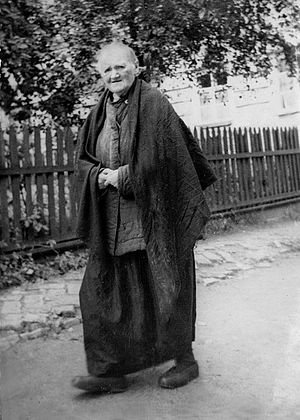
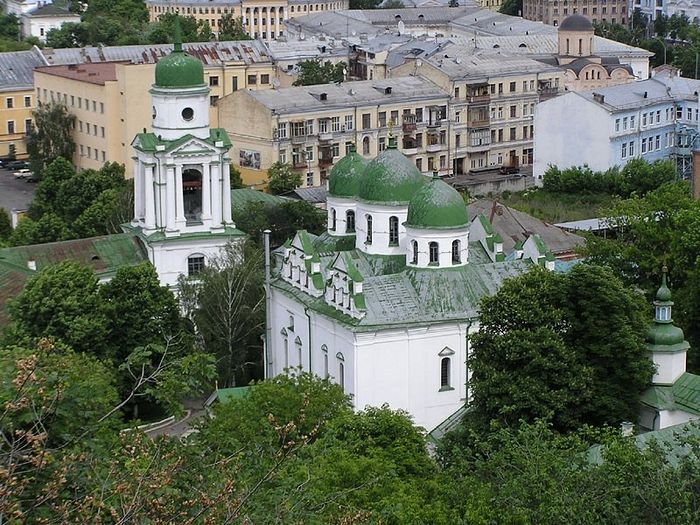
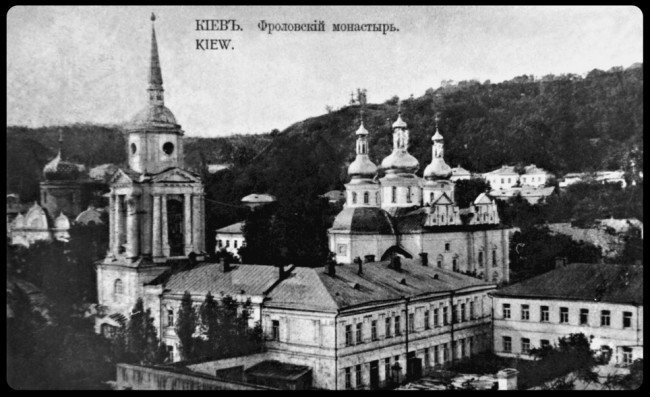
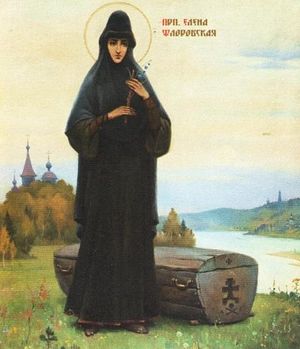
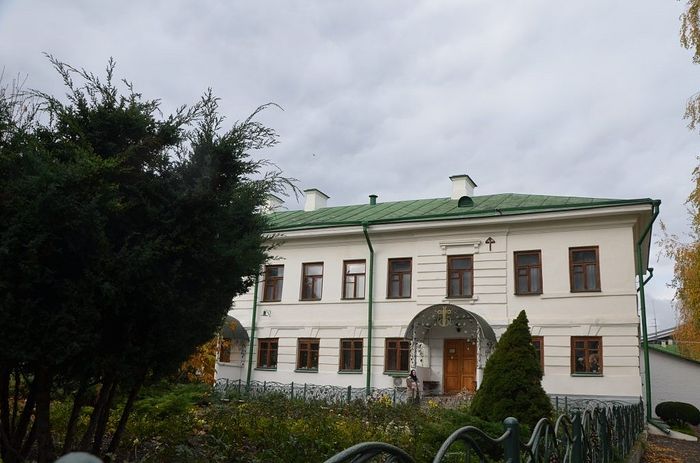
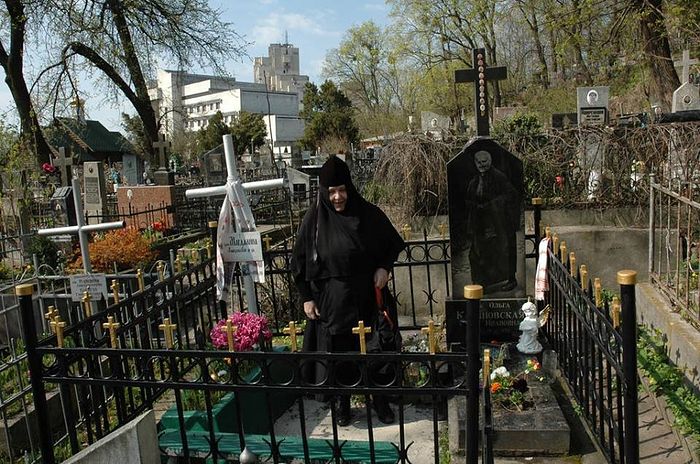
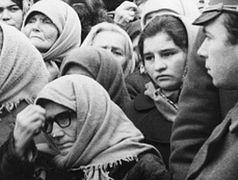
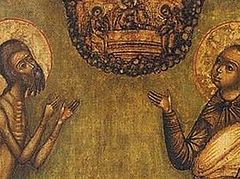
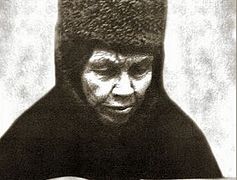
The article on your page (http://orthochristian.com/109125.html) mentions a book called "A Cry For Spiritual Life". I cannot seem to find it in print. Could you please tell me where I might find this book.
Thanking you,
Oksana Hrubskyj